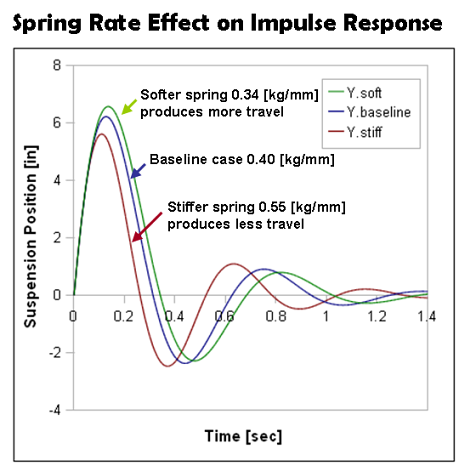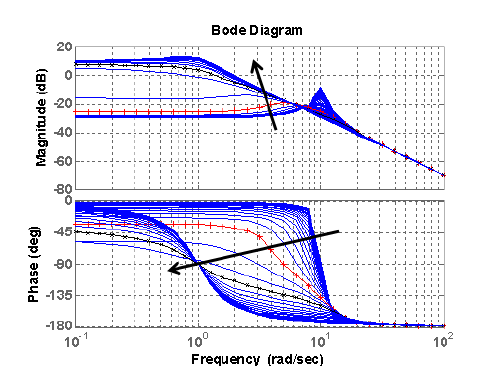Yes in general. But I have not received feedback on the EVP pads and Norman is obviously very knowledgeable and experienced.
Have you any experience with fo.q footers?
Yes in general. But I have not received feedback on the EVP pads and Norman is obviously very knowledgeable and experienced.
Have you any experience with fo.q footers?
In my experience, providing internal vibration with a way to drain and convert into work or heat has always been beneficial, as long as the same ‘drain’ doesn’t couple the unit to external vibration. On the other hand, adding compliance typically isolates a component from external vibration but also provides no means to drain internal vibration. So, a strategy that drains internal vibration and isolates external vibration will always be positive, while a strategy that decouples a unit from external vibration while preventing internal vibration from draining will depend on the relative impact on SQ of the external vs internal vibration and can generally be considered at best a partial solution.No but that is most definitely compliant / soft suspension impeding energy transfer. It does not mean it will not net out positive, but it is going to be counter productive to the Daiza MOA.
Dear Emile and Mike L,
I’ve had several Daizas in my system for some time and several more unused in storage as I had been redoing my system. Finally caught up with this thread and my system changes, and have now put many of the stored Daizas to use to wonderful effect.
My question to Mike L and Emile is with respect to using the Taiko footers (without the copper circle) between the Daizas and the component: why do you remove the copper circle? Is it because it is difficult to fit the footers properly under the gear with the copper circles in place? Or is it because removing the copper circle results in improved performance?
Thanks in advance for your reply.
And Emile thanks for your contributions to audio enjoyment and your willingness to provide endless and selfless support to the audiophile community. Always a pleasure
I think (feel free to correct me if wrong) forum participant Stacore even manages to get down to a 2.5Hz resonance using a 80kg mass platform and adjustable air bladders.
i'm not the expert as to the technical rational for why it works; but for on top of the Daiza between the gear bottom and the Daiza, the little hollow panzerholtz rounds (filled with foam) seems best without the copper top. the copper top seems to slightly smear the sound when i've tried it either face down or up. intuitively i believe it's because you lose a degree of 'bite' (there is a degree of sliding on a micro level) since you are spreading the surface engagement over a wider area. somewhat analogous to a cone tip. you are looking for solid unambiguous connection to the benefit of the whole Daiza system. and as the gear settles after set-up, the bare panzerholtz round will 'meld/mate' into top and bottom surfaces and that helps the sound. the direct contact between the panzerholtz footer and both surfaces seems to work. the broad copper rounds can't do that.
this is, of course, only what i hear in my system. Emile i'm sure will post something more fact based.
at this point i might have 50-60 of those little foam filled panzerholtz round footers in my system.
as part of the whole Daiza system, those copper rounds are excellent under the Daiza working with the foam inserts. i have a stack of those spare copper rounds, and maybe at some point i might find a use for them.
btw; amazing system you have there cmarin.
Though imperfect, still a good solution for present setup.T
Tailor-sized Daiza is definitely the best. But still on my HiFi journey, not sure what to be kept. So a standard-sized Daiza is suitable for present setting.
Just put Lumin U1 Mini and 2 Plixir LPS on Daiza. It is just like our high-density living environment here in Hong Kong.
Anyway, it is absolutely a good and enjoyable experience to have Daizas.
PS my friends got 2 tailor-sized Daizas last week and after putting them under the network player and Pre amp for few days, he plans to get some more

Is there a rule of thumb which components typically benefit most from a Daiza in an analog + digital system, i.e. where to start?
I'm considering a Daiza between a Minus-K platform and a Technics SP10 Mkiii, which will be housed in an Albert Porter Panzerholz plinth. Will the location of the footers on the 483x600 mm version allow it to sit properly on the 18x20 in top plate of the Minus-K? Ideally, I'd want a little extra room for balancing the Minus-K.
Thanks for your thoughts, Mike. I certainly respect your experience. I've been using Minus-Ks for a decade with a seqeunce of turntables (first a Clearaudio Innovation Wood, then a Nantais Ref II Lenco, and now a Brinkmann Oasis), so I am all too familiar with the balancing act they require.
I've always used an Adona multi-element shelf between the Minus-K and turntable to achieve proper mass and distribution of weight, and because the top plate on the M-K is just too small. I was planning on doing the same with the MkIII when I get it all put together. But then I thought about finding a Panzerholz shelf instead of the Adona shelf, given that the plinth will be Panzerholz and ebony; this thought led me to the Daiza. Its duty would be as a non-resonant interface, maybe helping to drain self-noise from the MkIII, which, if I take Albert's recommendation, would have Stillpoint Ultra 5s as footers. But perhaps that might not be the best idea. I will reach out the Emile. Thanks again.
Bill
Mike, the chap who has Rockport Arrakis w 6 REL subs, runs his Kodo The Beat on a Minus K. I believe I'm right in thinking The Beat has Stillpoints Ultra 5s built-in to the design, and so Ultra 5s and Minus K being used together.ok, i understand a little more. you are a Minus K veteran.
since you have used the Minus K with multiple turntables, have any of those had suspended plinths? and did the action of the Minus K and those other suspensions have any un-wanted side effects.
i guess i got confused when you mentioned you needed to know the location of the foam inserts on the bottom of the Daiza, which led me to assume you would use the Daiza footers between the Minus K and the Daiza. but now you say above that the Daiza would be used as a non-resonant interface......which maybe means just as a shelf only, no footers. but then you add that the SP-10 MkIII would have Stillpoints. so that would be three passive devices stacked. hummm.
so the concern i have is that even 'only' Stillpoint footers would prove problematic with a Minus K. you are combining two different passive devices. sorta like a car with it's suspension, sitting on top of a platform with another suspension. the combination of the two is un-predicable. any bump would cause a cyclic feedback.
yet.....maybe you have already combined the Minus K and other passive suspensions?
my view is a combination of passive devices needs to be engineered. like the Taiko Tana active system. where you have an active shelf, and panzerholtz 10mm top layer, a rubber membrane, then a Daiza shelf + a dedicated panzerholtz enclosed LPS. it's a whole complete system. Emile engineered it.
but you are a 10 year experienced Minus K user......and maybe i am over-thinking this.



| Steve Williams Site Founder | Site Owner | Administrator | Ron Resnick Site Owner | Administrator | Julian (The Fixer) Website Build | Marketing Managersing |


